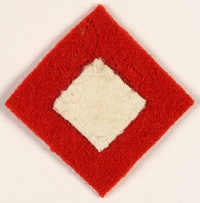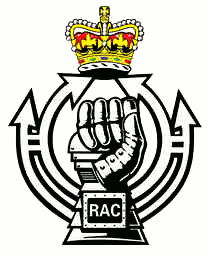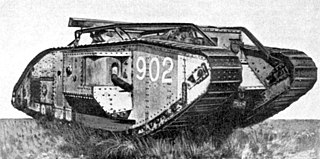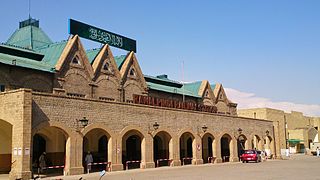The 10th Armoured Brigade was a short-lived armoured brigade of the British Army in World War II. It had been converted in November 1941 from infantry battalions, but had never seen action and was disbanded in late 1943.

The 42nd Armoured Division was an armoured division of the British Army raised during the Second World War.

The 46th Infantry Division was an infantry division of the British Army raised in 1939 that saw distinguished service during the Second World War, fighting in the Battle of France and the Battle of Dunkirk where it was evacuated and later in North Africa, Italy and Greece.

The 212th Brigade was a Home Service formation of the British Army during World War I and World War II.

158th Regiment Royal Armoured Corps was a short-lived armoured regiment of the British Army's Royal Armoured Corps serving in India during World War II.

159th Regiment Royal Armoured Corps was a short-lived armoured regiment of the British Army's Royal Armoured Corps serving in India during World War II.

160th Regiment Royal Armoured Corps was a short-lived armoured regiment of the British Army's Royal Armoured Corps serving in India during World War II.
The 151st Regiment Royal Armoured Corps was an armoured regiment of the British Army's Royal Armoured Corps that was raised during the Second World War.

The 145th Regiment Royal Armoured Corps was an armoured regiment of the British Army's Royal Armoured Corps that served in North Africa, Tunisia and Italy during World War II.
149th Regiment Royal Armoured Corps was an armoured regiment of the British Army's Royal Armoured Corps that served in the Burma Campaign during World War II.
The 207th Independent Infantry Brigade was a Home Defence formation of the British Army during World War II.
The 112th Regiment Royal Armoured Corps (Foresters) was an armoured car regiment of the British Army's Royal Armoured Corps during World War II.
The 143rd Regiment Royal Armoured Corps was a short-lived armoured regiment of the British Army's Royal Armoured Corps during World War II.
The 110th Regiment Royal Armoured Corps was an armoured regiment of the British Army's Royal Armoured Corps raised during the Second World War.
The 111th Regiment Royal Armoured Corps was an armoured regiment of the British Army, raised by the Royal Armoured Corps during the Second World War.
The 142nd (Suffolk) Regiment Royal Armoured Corps was an armoured regiment of the British Army's Royal Armoured Corps that was raised in World War II and saw active service. The regiment served in the final stages of the North African Campaign at Tunisia and later served during the Italian Campaign from 1943 until early 1945 when it was disbanded.
The 141st Regiment Royal Armoured Corps was an armoured regiment of the British Army, part of the Royal Armoured Corps, raised during World War II.
The 35th Armoured Brigade was an armoured brigade formation of the British Army, created during World War II. The brigade was never deployed in combat, remaining in the UK to act as a home defence and training unit, providing replacements for other formations.











